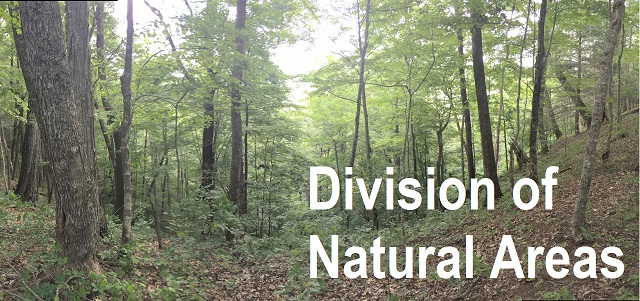Title
Natural disturbance by tree falls in old-growth mixed mesophytic forest: Lilley Cornett Woods, Kentucky
Document Type
Article
Publication Date
1982
Abstract
Natural disturbance by tree-falls has been monitored since 1973 on a 104-ha tract of old-growth mixed mesophytic forest at Lilley Cornett Woods in southeastern Kentucky. During this time, 77 gaps have been recorded. Mean gap size is 374 m2, median size is 2307 m2, and the range of gaps observed to date is from 74 m to 1235 m2. Gap formation varies greatly by season and year. The largest number of treefalls usually occurs in the summer from June through August. Tree-fall appears unrelated to regional weather patterns, but may be strongly influenced by local windstorms of high velocity and brief duration° Sudden death of American beech (Fagus .grandifolia) by overthrow or stem breakage is the most frequent cause of gaps, Although beech is also the most frequent tree with large boles in the forest, a greater proportion of gaps are formed than would be predicted from its density, probably because of its high incidence of hollow stems, and shallow root systems. More gaps are formed by large trees breaking off above # the ground than by overturning. Slope positions and form do not appear to strongly influence tree-fall frequency.
Seven estimates of canopy turnover time are given, based on two different methods, The disturbance regime of scattered gaps formed in an uneven-aged forest suggests that the Woods provides an example of the "shifting mosaic steady-state" model of forest development. Whether or not the Woods is an area that provides all developmental stages of this model depends on definition of forest composition, continued long-term monitoring, and refinement of estimates of canopy turnover time. Our best estimate of canopy turnover time is 269 years, but this figure still represents a general estimate because different methods of calculation give different results.
Recommended Citation
Romme, W. H., and W. H. Martin. 1982. Natural disturbance by tree falls in old-growth mixed mesophytic forest: Lilley Cornett Woods, Kentucky. Pages 367-383 in R. N. Muller, editor. Proceedings of the fourth annual Central Hardwood Forest Conference, Lexington, KY.



Comments
"Contribution No. 4 from Lilley Cornett Woods, Appalachian Ecological Research Station of Eastern Kentucky University, Richmond, KY."